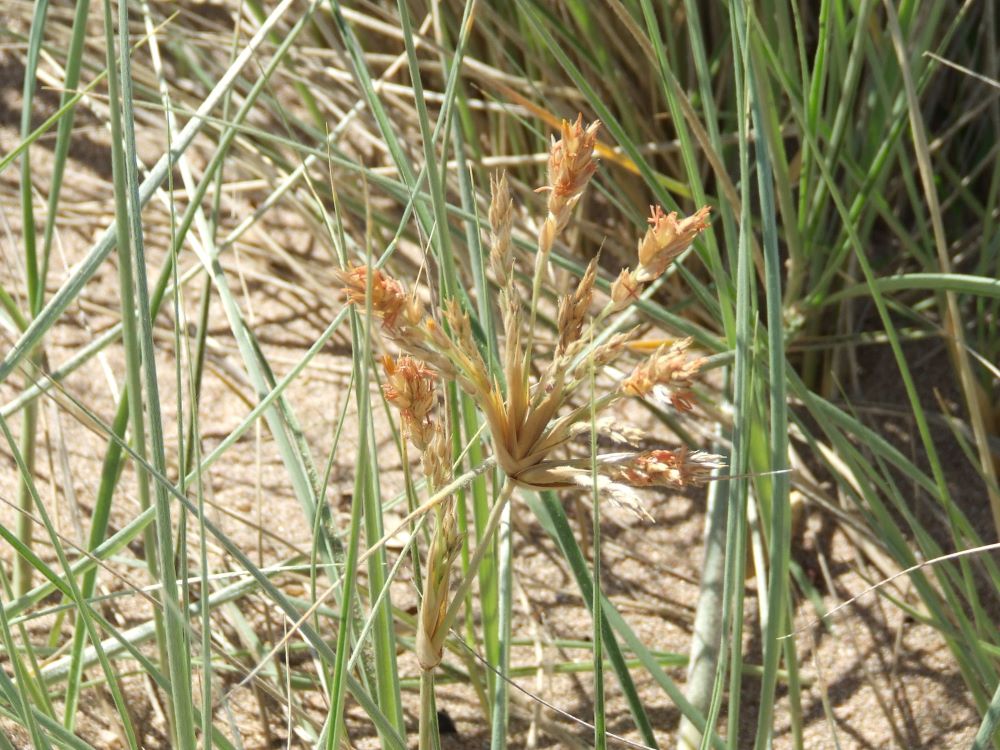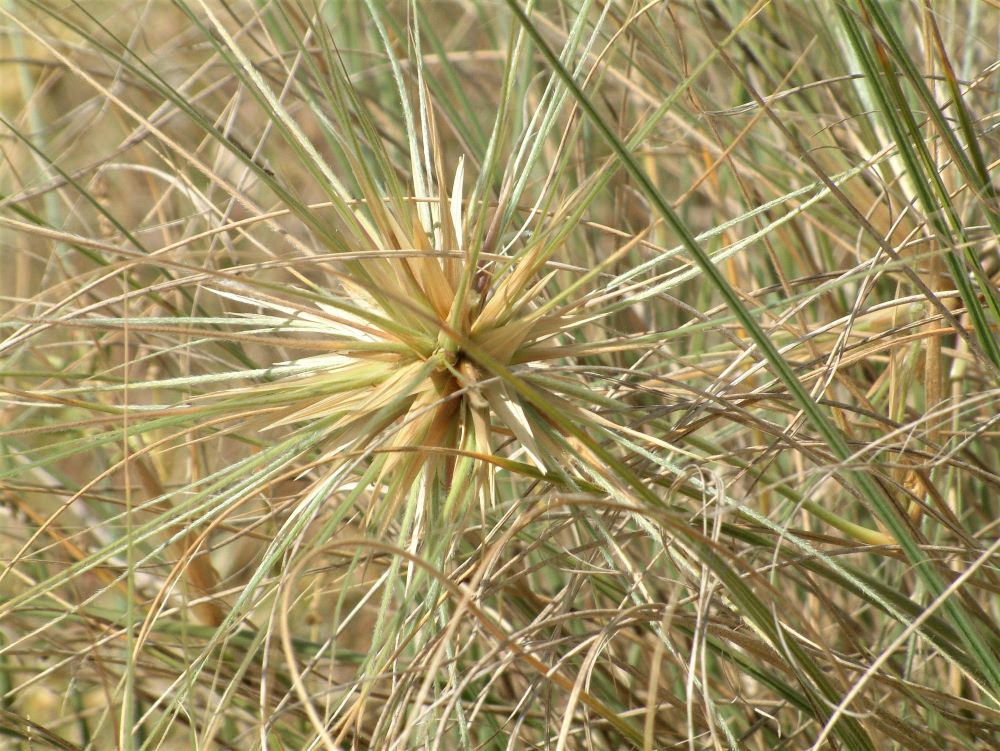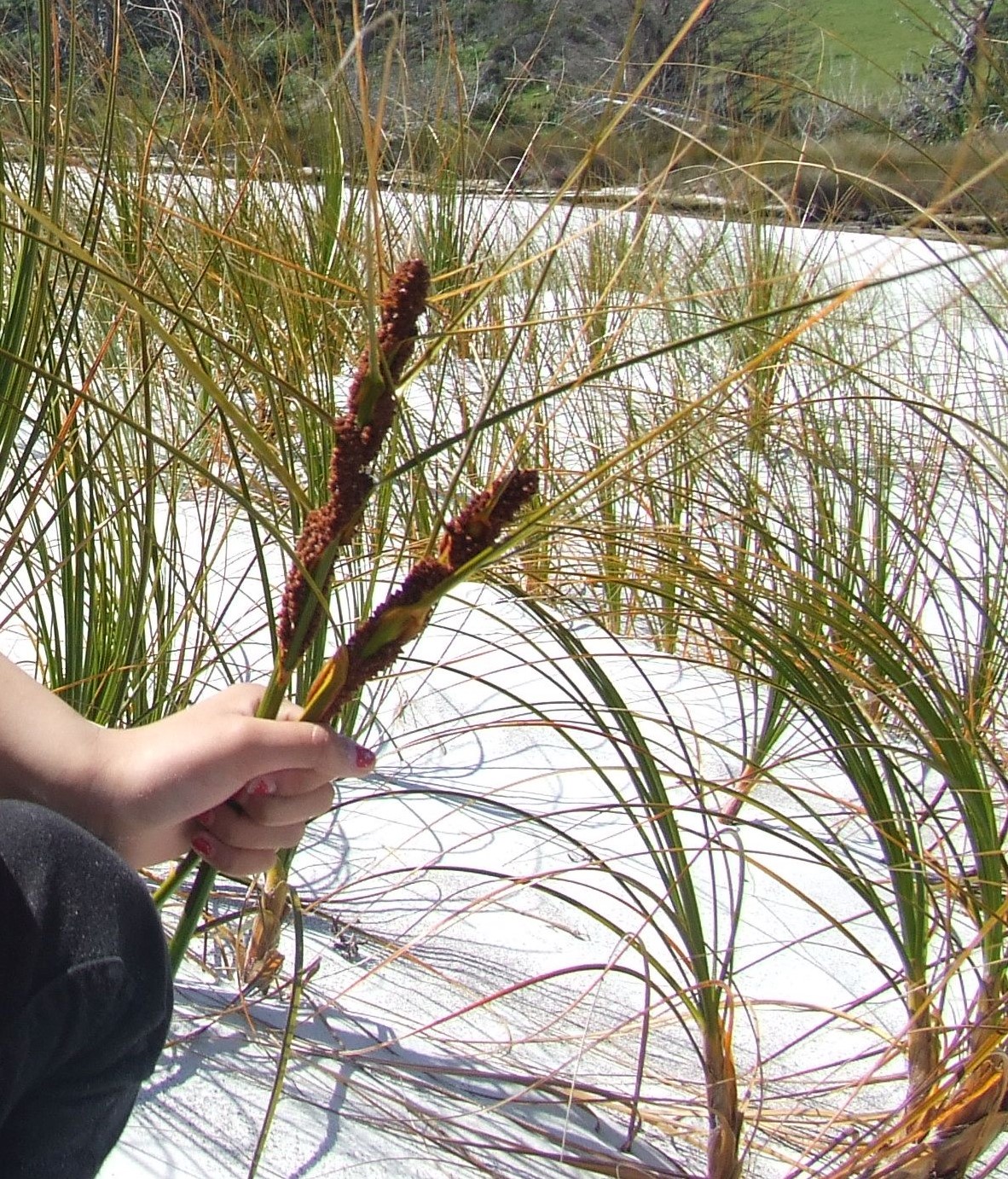Ecosourcing for dune restoration
Restoration planting of dunes aims to create a wild plant community which can look after itself and would’ve occurred naturally at a site in the past. For dune restoration planting, we strongly recommend using ecosourced plants. Ecosourced plants are grown from seeds that have been collected locally from naturally occurring vegetation in your area. Ecosourced spinifex/pīngao can usually only be obtained by collecting the seed first.
| Always obtain land-owner permission before collecting plants or plant material, including seeds. Permits are required to collect from Public Conservation Land and other public land – always check first! |
Collecting spinfex and pīngao seed
- Spinifex and pīngao seed is collected and sent to nurseries for propagation, then returned to us for planting. Where possible seed is collected from the beach where the plants will be planted, or where there is no adequate seed source, from the relevant Ecological District.
- Collect the seed from as large an area of a beach as possible and try not to collect from the same area each year. Make careful note of where the seed is collected from and the date collected, especially if you are sending to a nursery to propagate the plants, or if you’re collecting from more than one site. Collect and store seed in paper bags as plastic will cause the seed to sweat and go mouldy. The bag will also help keep it safe from birds and rodents.
A few tips and tricks to get the best out of your collected seed:
Spinifex
- Seed is ready for collection when the seed-head is golden and comes off the plant easily
- This varies from year to year and site to site so check regularly to see if the seed heads are ready. The early seed heads tend to have the most viable seeds, so they are worth catching!
- Collect only female seed-heads, not the male flower heads (see photos)
- Only collect seed where there are male plants nearby (preferably within two metres)
- Only collect fully formed seed-heads which are a golden, straw colour
- Don’t collect misshapen seed-heads with black lumps on the spikelets as these are infected
- Assess the number of formed seeds in a few seed-heads before collecting large quantities of seed. Repeat this process when moving to a new area.

The male spinifex plant produces pale brown, compact flowers about 5 cm long.

Female spinifex flower-heads can be up to 25 cm diameter, they break free at maturity and roll across the sand.
For more on information spinifex seed collection:
Guidelines for the seed collection, propagation and establishment of spinifex are available to download below, from the coastalrestorationtrust.org.nz website.
Pīngao
- When the seed is ready the stalks will be green/yellow colour, and the heads golden brown
- Seed should be collected when you run your hand down the spike and the seeds are dislodged, immature seed is greenish in colour and difficult to remove
- The amount of good seed in a head varies but generally 20 seed heads equals 500 plants
- Use scissors, secateurs or a shape knife to remove seed heads, do not remove all heads from any plant.
For more on information pīngao seed collection:
Guidelines for the seed collection, propagation and establishment of pīngao are available to download below, from the coastalrestorationtrust.org.nz website.
Buying seedlings from a nursery
If you’re buying seedlings from a nursery, make sure you get detailed information about where the seed was collected and ensure that the plant’s identity has been verified by a recognised expert. When using nursery seed stocks, always consider whether the stated source is appropriate given the guidance above for seed collection.
Need more help?
For more information or assistance with spinifex and pīngao seed collection please contact: Laura - P: 0800 002 004 | E: CoastCare@nrc.govt.nz

When pīngao seed is ready, the stalks will be green/yellow, and the heads brown.
